CAN I SEE YOUR WORK?
It’s the first question you’ll hear when you go after a new job or client.
That’s why a portfolio is a must for anyone working in a creative field. Whether you’re a graphic designer, photographer, writer, or artist, your creative portfolio is a self-branding tool that lets you tell your professional story. And for creatives, it’s much more important than a resume.
Today’s portfolios come in many forms. Digital portfolios, or e-portfolios, have become trendy in our remote world for their accessibility, affordability, and shareability. But physical portfolios, like perfectly bound print portfolio books, remain timeless and effective tangibles that wow those in face-to-face meetings.
Beyond format, you need to figure a lot out to land on a creative portfolio that captures both your work and your unique brand. This handbook has everything you need to effectively sell your skills—chock full of research, tips, and case studies.

1. PANEL
Creative contributors
Leading creatives contributed their advice and personal stories on creating an effective portfolio.

J. Nordberg
Senior director of brand and creative

Susan Tanabe
Senior copywriter

Jenny Ackerman
Senior art director

Dakota Brinkert
Designer and social digital creator

Dan Milnor
Creative evangelist and photographer

John Zilly
Creative director
Written by Aer Parris
2. INTRODUCTION
What is a creative portfolio?Anyone in any industry can create a portfolio to document and share their work. But when creativity is your profession, it’s essential to have an inspiring, organized, and imaginative portfolio demonstrating your originality.
By definition, a portfolio is a unique collection of work samples, methods, and other materials that provides an overview of your skills, capabilities, and qualifications as a creative. It's way more than a resume; your book offers tangible evidence of your proudest projects. So it should be highly curated and tailored for the job you're going after—while remaining true to your brand.
There are no hard and fast portfolio rules. But the underlying purpose remains consistent: to showcase your talents, experience, and accomplishments comprehensively. And do it creatively.
An essential tool for all types of creatives
In nearly every creative discipline—content writing, fashion design, photography, or architecture—prospective clients and employers want to see samples of your work before hiring you. And in today’s competitive landscape, providing this proof of work is a benchmark requirement.
A portfolio is an essential tool for creatives because it enables prospects to gauge your skills, previous work experience, and how well your abilities align with the creative direction behind their needs.
When a high-profile clothing brand needs to hire a freelance photographer for a shoot, they want to see candidates with a book full of remarkable examples of catalog and fashion photography. So, if you share a creative portfolio highlighting your experience, skills, and eye for photography in those genres, plus a unique personality, you’ll stand out in the pile of applicants.
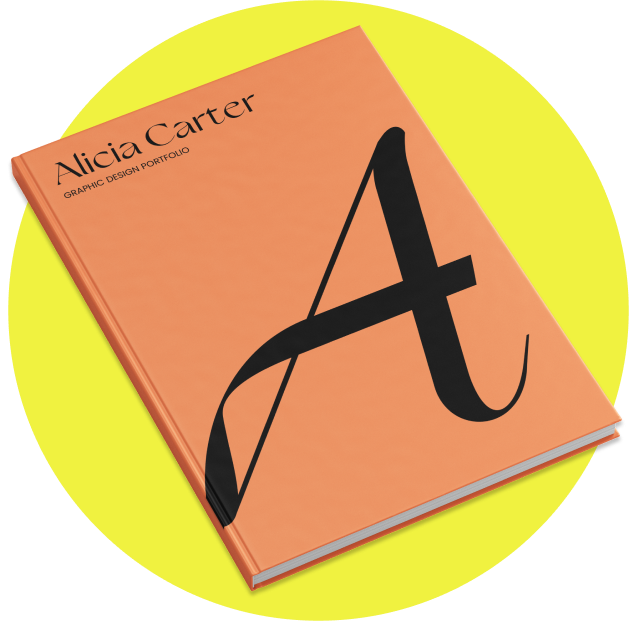
3. RESEARCH
Why you need a portfolio as a creative
"If the word ‘creative’ is used to describe the work you do or want to do, you need a portfolio," says Susan Tanabe, Blurb’s senior copywriter. "This goes for photographers, makeup artists, interior designers, visual artists, copywriters, and the like."
But why must creatives have one? We’ve compiled research findings and case studies that underscore your need for a well-curated portfolio.
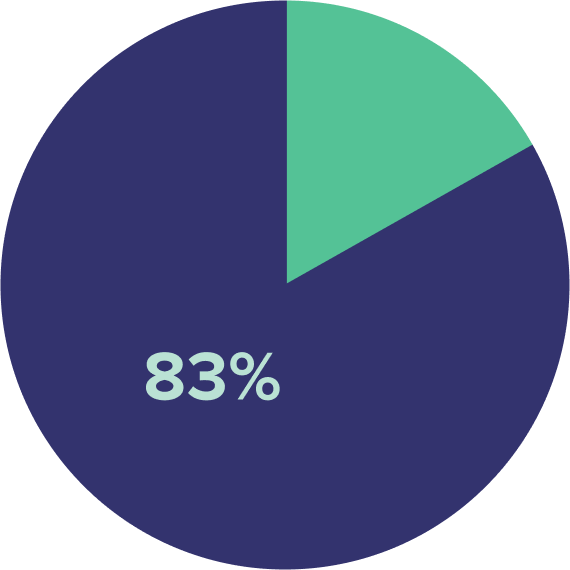
83% of employers want you to show (rather than tell) your skills
We've all heard the writing adage you must show rather than tell. Unsurprisingly, it's true while job hunting in the creative industry, too. Samples that put your work on display say more about your abilities than words on a resume can.
In fact, a survey conducted by Hart Research Associates revealed that an astounding 83% of employers surveyed thought portfolios accurately represented a potential employee's capability and aptitude. So, five of six businesses use portfolios to make hiring decisions.
For many employers, relying on portfolios over resumes is especially true for recent graduates. After all, a 4.0 graphic design student may be good at completing class projects but not good at thinking outside the box—or a fine art student might be fantastic at lifelike portraits of celebrities at university but terrible at cartoon dogs for high-end pet brand paid work.
"Portfolios continue to be the ultimate purveyors of creative potential," according to research by Blakeman & Hoy. "For students, their portfolio tells the story of their passion for the craft of advertising (design or copywriting), highlights their conceptual and strategic abilities, and promotes their knowledge of design and copy use within diverse mediums."
Let your work speak for itself in a portfolio that shows exactly who you are as an artist or creative professional. A well-conceived portfolio speaks volumes to prospective employers and clients about your skillset, capabilities, and experience. And it can be the deciding factor when choosing between you and someone with similar qualifications on paper.
Case study: graphic design program portfolio
Shundiin Nakai, an Albuquerque-based creative and member of the Navajo Nation, created a print portfolio to showcase her work at the end of her graphic design program at Rocky Mountain College of Art and Design.
"This book started as an assignment in one of my last classes," Nakai says. "I wanted to give readers insight into who I am and the type of design work I want to do."
She didn’t stop there. Nakai pushed herself to create a brand identity that truly displayed herself as a designer. "The personal aspect of this project, who I am and the type of work I want to do, was the hardest for me," she shares. "The time spent on this book ultimately gave insight into how I find solace in creativity."
It is a gorgeous book that shows off Nakai’s talents as a graphic designer—allowing employers to understand what is unique about her process and what she brings to the table, even without paid experience. Explore her book, Solace, now.
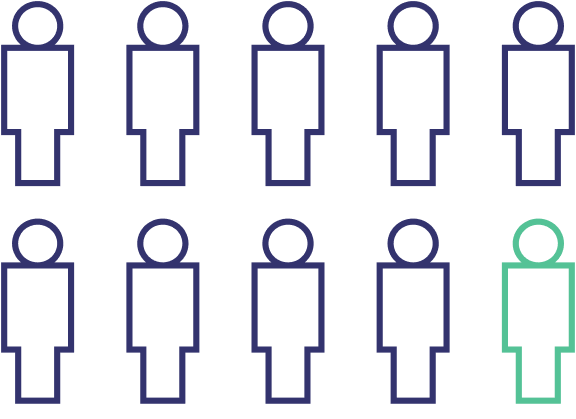
Convey culture fit and communication style to 9 out of 10 employers
Recruiters and hiring managers are searching for applicants who can bring more than just a good resume (or good grades) to the table. According to a 2021 comparative study, employers want people that can fit into their company culture and display innovative skills, neither of which can be easily determined from a single-page resume.
The same study found that 9 in 10 employers who participated in a survey (180 businesses total) indicated that digital portfolios were "somewhat useful" or "very useful" during the hiring process. That's because portfolios provide not only a snapshot of your work experience and creativity, but also insight into your strategy, organization abilities, and communication skills.
Portfolios are more than just pictures of your project samples—they're your chance to build a narrative about your work and your own identity as a creator. They show how well you can sell yourself and share a vision.
Case study: professor’s portfolio on identity
Artist and graphic design professor Chen Gao creates a portfolio every few years. In her latest edition, My Design Narrative, she explores her identity as a Chinese immigrant and its impact on her work.
"The feelings [in this portfolio] are represented in a first-person narrative that depicts my background and experience," she shares. "It illustrates the person (myself) who lived outside their homeland for several years and shared feelings about being distanced and lost in the conjunct place."
In her classroom, she does the same work, teaching her students how to use Photoshop, Illustrator, and InDesign, but also how to provide and receive constructive feedback from peers. It’s this last piece, she believes, that allows them to explore and share their own identity in portfolio form.
"Giving critical responses to peers is also a process of thinking clearly about themselves," Gao explains. "They will gradually discover their interests and find ways to solve problems. Then creating portfolios even after graduating is no longer a big thing."
We talked to Gao about her portfolio, teaching, and print's importance in a digital world. You can read the interview here.

Get discovered in an increasingly competitive global industry
The creative industry is growing rapidly, and to keep up, you need a portfolio that will make you stand out. Whether it’s for landing a gig or securing a freelance job, having an impressive portfolio—that can be found online—can help you get discovered by the right people.
Let's look at the numbers. The sheer number of freelancers in the United States continues to climb, contributing $1.3 trillion to the U.S. economy in 2022, according to Zippia. Freelancers comprise a dominant portion of the workforce for many industries, including 75% of the arts and design industry's total workforce. Additionally, 82% of all freelancers in the U.S. fall into the category of freelance writers.
Add to the freelance economy the gig economy and the competitive nature of the creative industry comes into focus. Experts project wages in the global gig economy will go from $134 billion in 2018 to $298 billion throughout 2023, a considerable 122% increase. Similarly, they anticipate global gig workers will rise from 43 million in 2018 to 78 million in 2023, an 81% jump!
So why a portfolio? The answer is simple: a website or digital portfolio with the right keywords included is a reliable way to get found in a sea of creative options. As a freelancer or gig worker, you want to build your portfolio to rise to the top of searches. Just imagine how many jobs would roll your way if a prospective typed "Seattle portrait photographer" into Google and your name popped up.
Case study: lessons from a digital portfolio
Dakota Brinkert was hired by Blurb a year ago, thanks in large part to his fine-tuned digital portfolio. Brinkert built his website to collect granular user data that informed his design and interview strategies. He used Google Analytics to see which pages each potential employer visited, how long they were on each page, and their user journey. From there, he made changes to help guide hiring managers through his portfolio to make a bigger impact.
He also shaped his interviews based on this information. Brinkert even went so far as to create landing pages specifically for each hiring manager, attempting to answer every question they may have had in an easy, eye-catching way. Want to do the same? He suggests using human-centered design principles:
• Understand what your audience needs and then serve it to them effortlessly.
• Track the user journey through your portfolio site and then make changes based on where visitors get tripped up or drop off.
"Creative work is problem-solving work, and (good) employers will want to know your approach and the thought process behind your solution," he goes on. "Provide case studies that show you’re capable of understanding a problem and that you’re strategic in your efforts to solve it. Walk your user through your creative execution and provide proof of its success in the real world. Oh, and don’t forget to show a bit of who you truly are."
"Designers, photographers, illustrators, artists, art directors, writers ... you must have a portfolio. No one cares about a resume."
Track your creative progress
We've talked about portfolios to pitch yourself to others, but they can also be just for yourself. "A career portfolio gives you a unique professional identity that evolves alongside you," writes April Rinne for Harvard Business Review. "It’s naturally aligned with lifelong learning and meant to help you expand your professional community and access to leadership opportunities."
Looking back at your career can help you make sense of your journey and build a professional narrative. As Rinne explains in her think piece, rather than expecting a linear step-by-step toward the apex of your creative career, you can embrace your varied roles and find connections between them.
Try constructing a creative portfolio that celebrates diversity—the same way you would your financial or investment portfolio. By tracking your creative progress in multiple formats and industries, you can take stock not only of where you are today, but also of the growth and learning opportunities you might want to explore in the future.
Case study: four decades of embroidery
Fiona Almeleh, a Devon-based embroidery artist, painter, and writer, created a comprehensive catalog of the hand-embroidered pieces she’s developed over her career. By looking back, she rediscovered what a life of artistry means to her.
"My work is always unplanned and organic in nature, inviting a conscious, creative involvement with the flow of life," she writes. "Committing to this process daily brings me great peace and joy."
Her portfolio features a preface explaining her journey into this embroidered, threaded, and sculptural work, followed by photographs of each of her pieces. True works of art standing alone, her art demands even more attention when gathered together.
Explore Almeleh’s body of work here.
4. PERSPECTIVE
What to consider before you begin
Research shows that creatives require portfolios to find full-time roles or one-off gigs. But what do you need to know before you begin? Here we'll cover the never-ending debate between digital and print portfolios as well as industry-specific considerations.
Should you create a digital or print portfolio?
Ultimately, your portfolio should be reflective of your style—as well as what prospective clients or employers expect or ask for. And like most complex questions, there is a nuanced answer.
"It really depends upon your medium and industry," says J. Nordberg, Blurb's senior director of brand and creative. "But a good rule is to make the portfolio in the medium you work—or want to work."
For digital roles like UX designer, you'll absolutely need a web portfolio with mockups, motion graphics, and even code samples to demonstrate your skills. And if you are a creative professional working in photography, you may want to consider a print portfolio that provides tactile visuals and controls for improperly calibrated monitors.
That said, the overwhelming majority of the Blurb creative team agreed that creatives should create both digital and print portfolios to truly show their skill.
Digital portfolios.
The internet opened the work world; gone are the days of geographic limitations in job hunts. Digital portfolios like websites, social media feeds, and blogs are easily accessible from anywhere with an internet connection and help you get discovered via search. Plus, they offer greater flexibility in the format and media types you can share. After all, if you’re a videographer or TikTok creator, you won’t be able to show motion in print form.
"It’s far more efficient and cost-effective to use a digital portfolio when looking for employment," says Brinkert.
"I had to compete against hundreds of other applicants for each job I applied to on my last job hunt," he continues. "Would it make sense for me to pay for printing and shipping and expect the potential employer to take the time to wait for the package, check the mail, open it, look over it, and connect my work in print to my digital application? Not really."
At the same time, digital portfolios often require some technical skill to create and maintain—not to mention the upkeep cost.
Print portfolios.
"Digital is table stakes these days," says Jenny Ackerman, Blurb's senior art director. After all, you can't even apply to many jobs without a link to your website. "But if you want to make a lasting impression, there is something undeniably special about a printed piece you can hold and present in meetings," she adds.
Printed portfolios can be far more easily shared in person, making them a compelling option for interviews and meetings. They provide a more engaging experience, as readers can flip through pages to see examples of your work.
"If you meet in person with potential clients or for interviews, a print version is essential," states John Zilly, creative director at Vimazi. "It's also nice to have a printed leave-behind portfolio," which can keep you top-of-mind as clients see your work on their desk rather than buried in an email.
However, printed portfolio books can be less practical for certain types of creative work, like animations, music, or video. They're also not as easy to update and duplicate on the fly.
Both print and digital portfolios.
We think creatives should have both a print and digital portfolio, each having its purpose and helping to tell a unified story. "In virtually any creative discipline, you really should have both," says Tanabe.
"Your online book is a must," she explains. "It better look good, be responsive, and be free of typos or dead links. As for a tangible copy of your book, it’s helpful to have two things:"
1. A large, gorgeous, printed book for those times you are face-to-face and want to impress.
2. Several smaller, more condensed versions to mail to prospective clients and employers.But, as Nordberg mentioned at the top, picking your format depends on your industry and goals. Let's dive in to industry specifics so you can make an informed decision.
Creative professions that require great portfolios
In some creative professions, a portfolio is a must-have, making standalone resumes virtually obsolete. Zilly clarifies: "Designers, photographers, illustrators, artists, art directors, advertising writers, non-advertising writers, architects, contractors, and builders. In these fields, you must have a portfolio, and no one really cares about a resume."
After all, for creatives in highly-competitive roles, a great portfolio is the cost of entry just to get noticed. And making a solid first impression means everything.
"I’ll know in 10 seconds if a portfolio has potential," says Ackerman. "If it passes the 10-second scan, I’ll probably spend another five minutes taking a closer look to see how it aligns with my project’s vision or team’s needs."
But what do the top industries look for in that 10-second scan? Let's get into the specifics.
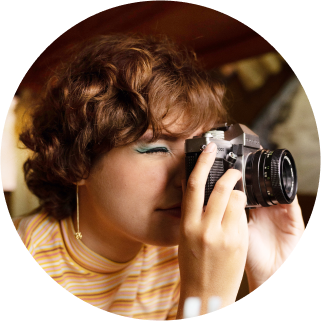
Photographers
As a photographer, your portfolio is your chance to tell your story and your way to get more work. You'll want to showcase your unique professional angle and execution capabilities, including specific techniques, photo editing skills, and genres of interest. Blurb creative evangelist and photographer Dan Milnor gives his suggestions:
• Put your best work first. Most viewers decide within the first few images. Start with a bang.
• Edit. You get very little time to make an impression. Make sure you show off not only your imagery but your ability to edit, sequence, and present work.
• Craft an elevator pitch. "I start portfolio reviews by asking why they are there and why they’re sharing this particular body of work." Milnor says. "And when they add a little humor, it never goes unnoticed."Learn more about how to create a photography portfolio.
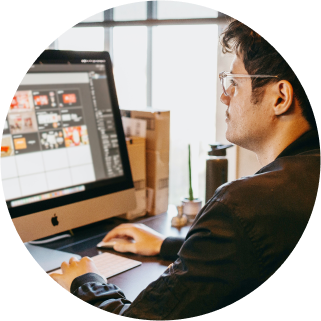
Graphic designers
Brand identity, ads, social graphics, or web design—to stand out in a saturated talent pool, a creative portfolio is essential in displaying your unique design skills, experience, and ability to communicate. Ackerman, Blurb's art director, shares her top advice:
• Be consistent. If there’s a gap in quality from piece to piece, it either says you don’t care or don’t know the difference.
• Give context. Guide the viewer through what they are looking at. Don’t forget to provide details about each project, like the goals, challenges, and your role in bringing it to life.
• Show the work you want to get. Keep your book focused on the story you want to tell and represent the type of work you ultimately want to attract.Ready to go deeper? Here's how to create a graphic design portfolio.

Interior designers
Interior design demands a professional portfolio, ideally, a tangible book to share and leave with prospective clients. You'll need to showcase your most impressive projects and the details of each job. This will help your viewer understand the final outcome and your process for getting there. Three things you can't go wrong with are:
• Show your process. How you got to the finish line matters. Don’t forget to include before-and-after images, sketches, and mood boards.
• Include the details. Tell the story of who you worked with, the challenges, and most importantly, how you resolved them.
• Tailor your work. Make sure you show what your client is looking for. Each client is different, and thus you'll need to match your past work samples to who you're pitching.Related reading: Here's how to make an interior design portfolio.

Writers
If you are an ideator, marketer, copywriter, blogger, storyteller, scriptwriter, or some other type of wordsmith, you must use your well-curated writing portfolio to prove you can tell stories, evoke emotion, and convey ideas. Here are tips from Burb copywriter Tanabe:
• Show variety. Don't get stuck on one voice. Provide tone versatility with humor, thoughtfulness, and intelligence.
• Marry great copy with great art direction. You need both words and visuals to create an irresistible tale.
• Proofread. This is obvious, but many people forget it! Don't let typos get in the way of great writing.Explore the nitty-gritty of how to create a writing portfolio.
Role Why a portfolio? Top tip Print or digital? UX/UI designers Clients and employers need to see your ability to make user-friendly wireframes, landing pages, app designs, and more to believe it. Your portfolio is a sample, too. Make your digital portfolio the best case study you have. Digital only Artists A huge catch-all category, you’ll need to show off your artistic capabilities, techniques, and genres to galleries, clients, or hiring managers. Don’t add every piece of art. Edit your work and only show the best of your best. Print, digital, or both, depending on goals Fashion designers Your book is an extension of your creativity, providing stylists and brands with insight into the looks, trends, and projects that reflect your unique angle. Pay attention to photography. Your portfolio is only as successful as how good your clothes look on film. Digital for reach, print for meetings Architects Clients rely on your portfolio to decide if you’re the person for their job. Show off your finished products and rough sketches, blueprints, and 3D-rendered models. Tell a story. Context matters in architecture, so share your goals and process. Digital for advertising, print for leave-behinds Product and industrial designers Combining art, science, engineering, and business, you need a creative portfolio to show off your ideas, design chops, and finished products to prospective employers. Share the results. Businesses care about outcomes—don’t be shy of sharing your impact. Digital for applications, print for business meetings Ad and marketing creatives Allow your book to capture your creative skills and campaign outcomes simultaneously so your next client or business knows who you are and what you can do for them. Customize your portfolio for each client or employer—showing the channels and campaigns most aligned with their needs. Digital for reach, print for meetings, leave-behinds, or mailers
5. Execute
How to create your portfolio
It can be nerve-wracking or overwhelming to begin making your first portfolio—or even updating the one you haven't touched for a few years. The first thing to remember when building or editing your portfolio is that you already have one, even if you don’t realize it or haven’t earned paid experience in your craft.
If you don't have much client experience or tangible project examples, invent your own brand or mock projects for your favorite companies. Just be sure to label them as such.
So take a big sigh of relief. You’ve done the work; this is just about showing it.
We offer a tried-and-true process for building a portfolio that works, no matter your industry. Ground zero for all creatives is identifying who it’s for and what’s in it. That's where we'll start.

1. Identify your audience, intentions, and tone
One of the most critical questions to ask yourself is: Who are you creating your portfolio for?
Knowing your audience—whether it be clients for contract gigs, art directors seeking in-house talent, or college admissions officers looking for student applications—informs your portfolio's purpose, structure, and content.
For example, your graphic design samples will definitely change if you pitch yourself to clients as a freelance designer, apply for an agency job, or seek admission into a post-graduate program. That's because what your audience expects of you is different.
Identifying your audience and the purpose of your portfolio can also help shape its overarching design theme, format, and aesthetics. You'll want to align your portfolio's mood and style to best reflect your personality and demonstrate you can do the work the hiring manager or client wants from you. Empathize with what your audience wants and design your portfolio accordingly.
2. Seek inspiration from other portfolios
Understanding your visual and creative vocabulary is a key part of the portfolio-building process. That's why seeking inspiration from other portfolios, whether in the same field or even completely unrelated, is invaluable.
A great way to start is by checking out online galleries like Behance or Dribbble (or even the Blurb Bookstore) and taking notes or bookmarking the portfolios that stand out.
This exercise can provide you with a runway of ideas for different portfolio styles, structural layouts, and formats you like. Take elements that you admire from these examples—perhaps a minimalist design layout or clear and vibrant typography—and use them to inspire your concepts.
Consider specific components to include in your portfolio as well, like a personalized introduction, use of project briefs, unfinished project sketches, and before-and-after case studies.
3. Distill your work into your best examples
One of the greatest challenges in building your creative portfolio is diligently selecting your best work examples to include and weeding out what doesn't make the cut. It can be difficult to eliminate a piece that you really like. But if it doesn't fit the theme, then chop it.
Think back to your target audience and your portfolio's purpose. "You want someone to stop on every page and say 'wow!'" says Zilly. "Remove anything that people may just page past."
Milnor agrees. "If I see a portfolio has fifty or more images, I know the photographer hasn’t done their job," he shares. "But if I see ten to twenty-five images, I know they are on the right track and have put some real thought into what made the cut."
Remember that not everything needs to be a successful client job—you can include personal projects, too. Just think about work that captures your skills and demonstrates the type of work you’d like to earn more of in the future.
"Some people say to only include the sorts of projects that you want to work on," says Zilly. "So making a portfolio is also your opportunity to be ambitious."
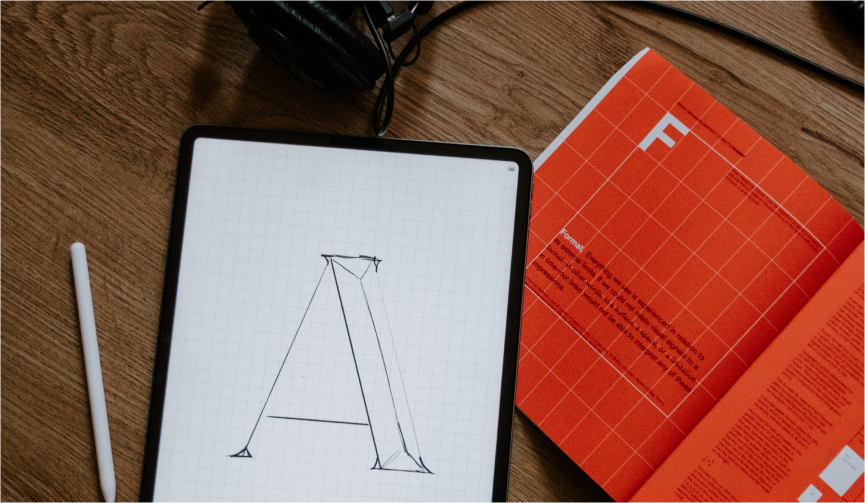
4. Determine your portfolio's format types
Again, the great debate between print and digital resurfaces. It’s time to decide which format makes the most sense to you, your craft, and your audience.
To recap: There are pros and cons to digital and print portfolios. Sure, digital formats are easier to create, edit, and share. But they might not be as engaging during an in-person interview. Print portfolio books tend to be more tactile and engaging—plus, they make a bigger impression since fewer people make them. But they can be time-consuming and costly to edit and print.
Before committing to just one particular format, like a digital portfolio website, don't discount the value of diversifying your deliverables. Weigh all possibilities in having a print version that you can hand out to your prospects or a digital version that you can easily share via an email or online application.
To help guide your decision, you can learn more in our blog: Portfolio Book or Digital Portfolio Website?
Just remember that no matter what your format, be creative. Your portfolio is your chance to tell your story and to try out an experimental use of materials. Print doesn't have to mean perfectly bound—it could be a DIY zine, pop-up book, or poster. Digital doesn't equal website—try a video presentation, Instagram grid, or video game. What reflects you best?
5. Organize and lay out your work cohesively
Without a well-thought-out structure, your portfolio could easily come across as disorganized and jumbled. Not a good look. Instead, spend time getting organized.
When structuring your portfolio layout, consider how you want to present yourself and the stories you want to tell about each piece and project. Don't forget your all-important target audience, too. What are they expecting?
First, segment your work. Design a navigation menu or table of contents and sort through the different buckets of samples you want to include. Figure out if you're grouping your work by medium or format, genre, industry, or tone—your options are limitless. This will give your portfolio a nice organizational hierarchy and an easy way for viewers to find what they want quickly.
Now that you have your samples in segments, arrange your work within each. Be sure to put your best work first. Many clients and hiring managers spend just three minutes on a portfolio. And if you have experience working for well-known brands, consider including these work examples at the forefront of your portfolio. Name recognition goes far!
Next, establish a visual hierarchy for your portfolio elements: titles, headers, subheaders, body copy, and images or video. To keep your visuals consistent, you can rely on premade templates if you're not a designer. Then add layouts for sections that make sense for the type of work you’re displaying (like featured work, case studies, client list), as well as elements like your bio, resume, and contact information.
Lastly, consider how viewers will interact with your portfolio. Before finalizing your design, think through the user experience. How will they move through your work? Are you creating an interactive portfolio that people can click through and explore? Or is it a more linear experience—one page flipping to the next? Help guide your audience to keep them engaged and intrigued.
"Keep your portfolio current. You never know when an amazing opportunity will present itself, and you won’t want to miss out!"
6. Add your branding and context
If you've perused the work of other creatives for inspiration, you've probably noticed how each portfolio is drastically different based on industry, style, aesthetic, and discipline. An ad creative's book is probably way more casual than an architect’s. They even differ within industries—a graphic designer who creates for punk-rock bands will likely have a much rawer feel than one specializing in luxe jewelry.
The key point is to ensure your portfolio—including layout, typography, background, and format—reflects who you are as a creative. Spend time figuring out your professional brand and reflecting it throughout your portfolio. Your font, color scheme, and tone of voice in your intro and statements should all match who you are selling yourself as, even if your samples are all over the place.
Milnor qualifies the above statement: "Over-branding or over-packaging often ends up overshadowing the work or is done as a substitute for subpar imagery." So express your brand while keeping the focus on your samples, above all.
You'll also want to provide context into your work and who you are. The golden rule with any portfolio is "show, don't tell," but there's still merit in describing your creative process. Every creative employs a unique methodology when bringing ideas to life.
Articulating your creative approach adds color and credibility to your projects. This background gives readers a sense of how you handle challenges and client demands and whether you can manage the scope of their project.

7. Keep your portfolio relevant and up-to-date
As you grow as a creative professional, new projects are an asset to your portfolio. View your book as a dynamic, fluid collection subject to change as you evolve.
It can feel silly to update your portfolio when you’re happy with your current company or flush with client work, but it’s smart to do just that. "Keep your portfolio current. You never know when an amazing opportunity will present itself, and you won’t want to miss out!" exclaims Ackerman. "A strong portfolio can make all the difference."
In addition to keeping your portfolio up-to-date with your most relevant and impactful work samples, you may want multiple portfolios or different versions for specific audiences. If you're a well-versed architect with multifaceted experience, having portfolios dedicated to commercial and residential projects for different potential clients may be a great approach. Clients can see their needs reflected more clearly without examples that aren’t relevant to them.
Milnor even suggests customizing books for a dream client or perfect job. Creating a single edition portfolio is possible with print-on-demand and landing pages.
Finally, consider creating another format if you already have a website or print portfolio. You may find a digital portfolio useful for quick updates and new additions, while a printed portfolio book is ideal as the hallmark of your trade when meeting high-profile prospects.
6. Pitch of our own
Using Blurb to get Started
If having a high-end hardcopy book is part of your strategy, Blurb’s here for you. Here’s why we’re a great choice.
Print-on-demand
Get as many books as you need whenever you need them, affordably and quickly.Professional formats
Choose from large portfolio books designed to impress or smaller books that make great leave-behinds.Free bookmaking tools
Design your book easily and intuitively with Blurb BookWright—for free.Integrations
Use the software you already know, like Adobe InDesign or Canva plus PDF to Book!









